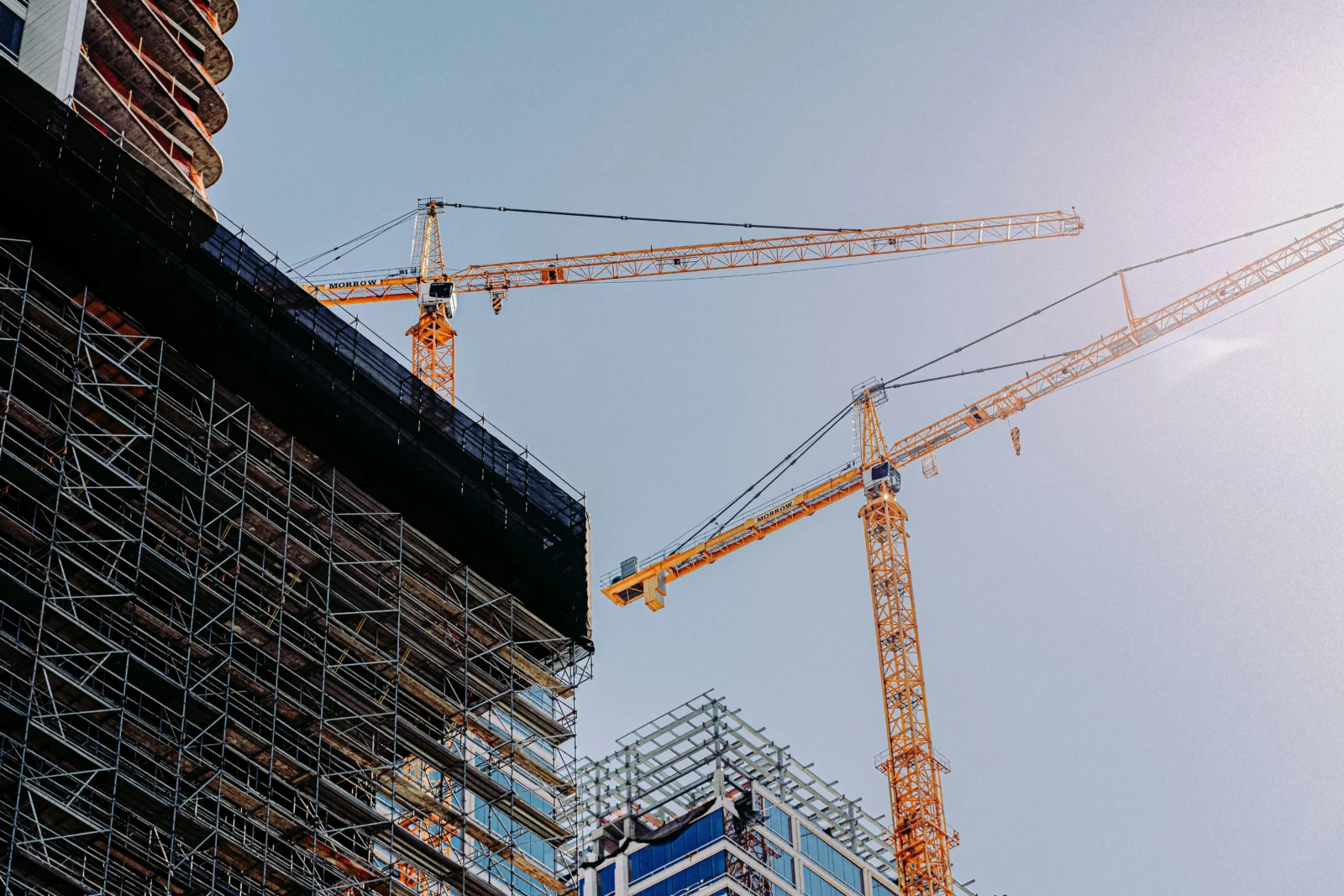- Home
- Articles
- Architectural Portfolio
- Architectral Presentation
- Inspirational Stories
- Architecture News
- Visualization
- BIM Industry
- Facade Design
- Parametric Design
- Career
- Landscape Architecture
- Construction
- Artificial Intelligence
- Sketching
- Design Softwares
- Diagrams
- Writing
- Architectural Tips
- Sustainability
- Courses
- Concept
- Technology
- History & Heritage
- Future of Architecture
- Guides & How-To
- Art & Culture
- Projects
- Interior Design
- Competitions
- Jobs
- Store
- Tools
- More
- Home
- Articles
- Architectural Portfolio
- Architectral Presentation
- Inspirational Stories
- Architecture News
- Visualization
- BIM Industry
- Facade Design
- Parametric Design
- Career
- Landscape Architecture
- Construction
- Artificial Intelligence
- Sketching
- Design Softwares
- Diagrams
- Writing
- Architectural Tips
- Sustainability
- Courses
- Concept
- Technology
- History & Heritage
- Future of Architecture
- Guides & How-To
- Art & Culture
- Projects
- Interior Design
- Competitions
- Jobs
- Store
- Tools
- More
The Case for Local Materials and Low Tech Architecture: Building a Sustainable Future
Discover the compelling case for local materials and low-tech architecture in our latest article. We delve into how simplicity and locality can reshape communities, promote sustainability, and reduce carbon footprints. Explore successful case studies, the economic advantages of sourcing locally, and the aesthetic appeal of low-tech designs.

In a world increasingly driven by rapid technological advancements, we often overlook the value of simplicity and locality in architecture. The case for local materials and low-tech design isn’t just about aesthetics; it’s about sustainability, community, and resilience. By embracing what’s readily available in our surroundings, we can create structures that harmonize with the environment and reflect our cultural identity.
Low-tech architecture champions practicality over extravagance. It prioritizes functionality and durability, allowing us to build homes and spaces that are not only beautiful but also cost-effective and environmentally friendly. As we explore the benefits of using local resources and traditional techniques, we can redefine our approach to building, fostering a deeper connection to our communities and the planet. Let’s dive into why this movement is gaining traction and how it can shape a more sustainable future.

Table of Contents
ToggleThe Case for Local Materials and Low Tech Architecture
We recognize the importance of local materials in architecture. Utilizing materials sourced within the community not only reduces transportation emissions but also supports local economies. By embracing regional resources, we create structures that resonate with the surrounding landscape, reinforcing cultural identity and fostering community engagement.
We also prioritize low-tech architecture for its numerous benefits. Low-tech designs emphasize simplicity and functionality, often requiring fewer resources and less energy than their high-tech counterparts. For instance, utilizing natural ventilation and passive solar heating reduces reliance on mechanical systems, lowering operational costs and environmental impact.
Incorporating local materials enhances the durability of structures. Materials such as bamboo, adobe, and reclaimed wood exhibit resilience against local weather patterns, virtually ensuring longevity. The use of these materials promotes a sustainable construction cycle, encouraging reuse and minimizing waste.
Our commitment to local materials and low-tech practices aligns with sustainable building standards. Studies indicate that buildings designed with these principles significantly lower carbon footprints compared to conventional construction methods. Hence, choosing local materials and low-tech strategies translates into responsible stewardship of our environment.
We also acknowledge the role of aesthetics in architecture. Low-tech structures can embody unique architectural styles that reflect local heritage. By prioritizing the beauty of simplicity, we contribute to the visual landscape of our communities while instilling a sense of pride in our shared spaces.
Overall, the case for local materials and low tech architecture stands strong. By focusing on sustainability, community engagement, and cultural identity, we pave the way for a resilient future in building practices.
Benefits of Local Materials
Local materials offer numerous advantages, particularly in promoting sustainability and enhancing communities. We focus on how these materials contribute to environmental stewardship and economic vitality.

Sustainability and Environmental Impact
Using local materials leads to reduced transportation emissions, significantly lowering a building’s carbon footprint. We utilize resources like bamboo, adobe, and reclaimed wood, all sourced from the immediate environment, which naturally require less energy to produce and transport. Such choices enhance energy efficiency through features like natural ventilation and passive solar heating. Adapting to the local climate further strengthens the resilience of structures, fostering harmony with nature.
Economic Advantages
Local sourcing supports community economies by keeping funds within the region. We contribute to job creation and stimulate local industries, reducing dependence on global markets. Additionally, using local materials often incurs lower costs since transportation expenses decrease. Long-lasting materials can cut maintenance costs while providing durable solutions for construction, making investments more sustainable over time. Emphasizing local materials strengthens communities economically and socially, promoting a self-sufficient, resilient future.
Low Tech Architecture Principles
Low-tech architecture emphasizes simplicity, sustainability, and community engagement. This approach prioritizes local materials and time-tested techniques over complex technologies.

Definition and Characteristics
Low-tech architecture embodies principles focusing on resourcefulness and practicality. Key characteristics include:
- Simplicity: Designs utilize straightforward forms and functions, favoring timeless aesthetics over trends.
- Local materials: Structures incorporate regionally sourced materials like stone, wood, and straw bales, enhancing durability and cultural relevance.
- Energy efficiency: Designs optimize natural light and ventilation, reducing reliance on mechanical systems for heating and cooling.
- Environmental harmony: Buildings integrate seamlessly into their surroundings, preserving local ecosystems and minimizing disruption.
- Community focus: Structures often serve multiple purposes, fostering social connections and engagement within neighborhoods.
Historical Context
Low-tech architecture roots trace back to ancient building practices that relied on local materials and methods. Historic examples include:
- Adobe structures: Found in Southwestern United States and Latin America, these buildings utilized mud bricks, showcasing resilience in arid climates.
- Thatched roofs: Common across Europe and Asia, using natural materials for roofing exemplifies sustainable techniques prevalent in communities.
- Timber framing: Traditional methods involve using locally sourced wood, promoting a connection between the built environment and the surrounding landscape.
These historical practices highlight the effectiveness of low-tech approaches in addressing local climate, resources, and cultural identity while fostering sustainability.
Case Studies in Low Tech Architecture
Numerous projects around the world demonstrate the effectiveness of local materials and low-tech architecture. These successful examples showcase practical applications and provide insights for future developments.

Successful Projects
- The Earthship Biotecture in New Mexico
Earthships utilize recycled materials like tires and bottles. These structures feature thermal mass for temperature regulation and rainwater harvesting systems, promoting sustainability and self-sufficiency.
- The Mud House in India
This project embodies the use of local mud and bamboo. The mud house employs passive solar design, resulting in natural insulation and reduced energy consumption, significantly lowering operational costs.
- The Treetap House in Oregon
Constructed from reclaimed wood and natural insulation, this home emphasizes low-impact living. Its design highlights energy efficiency through natural ventilation and passive heating, enhancing environmental harmony.
- The Cuyahoga Valley National Park Visitor Center in Ohio
This center integrates local stone and wood in its construction. It features ample daylighting and natural ventilation, demonstrating how local materials can enhance both aesthetic appeal and functionality.
Lessons Learned
- Local Materials Foster Cultural Identity
Utilizing locally sourced materials strengthens the connection between the structures and their communities. It reflects both heritage and character, instilling pride among residents.
- Simplicity Enhances Functionality
Low-tech designs promote straightforward construction and maintenance. Projects that embrace simplicity often experience decreased costs and increased community involvement in the building process.
- Natural Elements Improve Sustainability
Buildings that leverage local climates and natural ventilation lead to reduced energy reliance. Learning to work with the environment rather than against it results in durability and resilience.
- Community Engagement Drives Success
Successful projects often involve community participation, from planning to construction. Engaging local stakeholders ensures that designs meet community needs while fostering a sense of ownership.
- Economic Benefits Cascade
Investing in local materials stimulates the local economy. Long-term savings arise from reduced transportation costs and maintenance, positively impacting community financial health.
These case studies and insights illustrate the profound impact that local materials and low-tech architecture can have on sustainability, economy, and cultural identity.
Challenges and Criticisms
Local materials and low-tech architecture face challenges and criticisms that merit examination. While this approach offers numerous benefits, understanding its complexities is crucial.

Misconceptions About Low Tech
Misconceptions about low-tech architecture often arise from a lack of understanding. Some perceive low-tech as synonymous with primitive or outdated constructions. In reality, low-tech architecture represents innovation rooted in tradition. It emphasizes contemporary needs while harnessing local resources effectively. Environmental performance, energy efficiency, and modern aesthetics can coexist in low-tech designs, challenging the notion that modern technology is essential for quality architecture.
Scalability Issues
Scalability presents another challenge for local materials and low-tech architecture. While small-scale projects often succeed, applying these principles to larger developments can prove difficult. The availability of local materials might limit larger constructions, especially in urban areas where resources are scarce. Additionally, developers may hesitate to invest in low-tech solutions due to perceived risks or market demand for high-tech buildings. This reluctance can hinder the widespread adoption of low-tech practices in the architectural industry and slow the shift toward sustainable building methods.
Conclusion
We’re witnessing an essential shift in architecture as local materials and low-tech designs gain prominence. Utilizing local materials significantly reduces transportation emissions, supports regional economies, and fosters community identity. Low-tech architecture prioritizes simplicity and functionality, translating into lower operational costs and enhanced environmental impact.
Examples of sustainable building methods abound, with structures that integrate natural elements, such as bamboo and reclaimed wood. These materials not only promote durability but also reflect regional heritage, reinforcing the connection between people and place. We observe that local economies thrive when we invest in community resources, creating jobs while cutting costs associated with maintenance and transportation.
Historic building practices reveal how effective local materials are in adapting to diverse climates and cultural identities. Low-tech architecture aligns with these traditions, emphasizing sustainability and community engagement. Case studies worldwide, such as the Earthship Biotecture and the Mud House, showcase the successful application of these principles, illustrating a path toward energy-efficient and community-oriented structures.
We acknowledge the challenges faced by this approach. Misunderstandings regarding low-tech concepts sometimes frame them as outdated, yet these designs embody innovative solutions rooted in tradition. Scalability issues arise in larger projects due to urban resource limitations and developer hesitance. Addressing these concerns is vital for advancing the adoption of local materials and low-tech architectures.
Overall, the case for local materials and low-tech architecture resonates strongly. This movement supports sustainable practices, enhances cultural identity, and contributes to resilient communities and environments. It’s essential for us to embrace these concepts in shaping the future of architecture and urban planning.
- biodegradable building materials
- carbon footprint reduction in construction
- earth-friendly architecture
- eco-conscious architectural design
- eco-friendly construction methods
- environmentally friendly construction
- Green Architecture
- local materials architecture
- low impact architecture
- low tech architecture
- minimalist architecture
- natural building materials
- recycled building materials
- renewable building resources
- sustainable architecture design
- sustainable building materials
- sustainable building techniques
- sustainable urban development
- Vernacular Architecture
- zero energy buildings
Submit your architectural projects
Follow these steps for submission your project. Submission FormLatest Posts
Dependable Service for Everyday Appliance Problems
When a washer stalls mid-cycle or a fridge warms up, you need...
8 Essential Web-Based Mapping Tools for Modeling Sea Level Rise and Flood Impacts
As climate change accelerates, flood risk and sea level rise have become...
How Sydney’s Architecture Responds to Climate, Light, and Lifestyle
Sydney’s architecture has never been driven by form alone. It evolves through...
Shipping Containers as Functional Infrastructure on Construction Sites
Construction sites are temporary by definition, yet the systems that support them...












Leave a comment